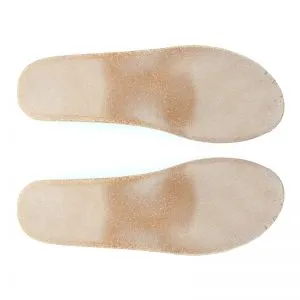Cork [material]
Cork is an impermeable, buoyant material, a prime-subset of bark tissue that is harvested for commercial use primarily from Quercus suber (the Cork Oak), which is endemic to southwest Europe and northwest Africa. Cork is composed of suberin, a hydrophobic substance, and because of its impermeability, buoyancy, elasticity and fire retardant, it is used in a variety of products, the most common of which is for wine stoppers. The montado landscape of Portugal produces approximately 50% of cork harvested annually worldwide, with Corticeira Amorim being the leading company in the industry. Cork was examined microscopically by Robert Hooke, which led to his discovery and naming of the cell.
Cork is used in musical instruments, particularly woodwind instruments, where it is used to fasten together segments of the instrument, making the seams airtight. Conducting baton handles are also often made out of cork.
It is also used in shoes, especially those using Goodyear Welt Construction.
Cork can be used to make bricks for the outer walls of houses, as in Portugal's pavilion at Expo 2000.
On November 28, 2007, the Portuguese national postal service CTT issued the world's first postage stamp made of cork.
Cork is used as the core of both baseballs and cricket balls. A corked bat is made by replacing the interior of a baseball bat with cork—a practice known as "corking". It was historically a method of cheating at baseball; the efficacy of the practice is now discredited.
Cork is often used, in various forms, in spacecraft heat shields and fairings.
Cork can be used in the paper pick-up mechanisms in inkjet and laser printers.
Cork is also used inside footwear to improve climate control and comfort.
Corks are also hung from hats to keep insects away. See cork hat.
Cork has been used as a core material in sandwich composite construction.
Cork can be used as the friction lining material of an automatic transmission clutch, as designed in certain mopeds.
Cork can be used instead of wood or aluminium in automotive interiors.
Cork can also be used to make watch bands and faces as seen with Sprout Watches.
Cork [material]
Cork is an impermeable, buoyant material, a prime-subset of bark tissue that is harvested for commercial use primarily from Quercus suber (the Cork Oak), which is endemic to southwest Europe and northwest Africa. Cork is composed of suberin, a hydrophobic substance, and because of its impermeability, buoyancy, elasticity and fire retardant, it is used in a variety of products, the most common of which is for wine stoppers. The montado landscape of Portugal produces approximately 50% of cork harvested annually worldwide, with Corticeira Amorim being the leading company in the industry. Cork was examined microscopically by Robert Hooke, which led to his discovery and naming of the cell.
Cork is used in musical instruments, particularly woodwind instruments, where it is used to fasten together segments of the instrument, making the seams airtight. Conducting baton handles are also often made out of cork.
It is also used in shoes, especially those using Goodyear Welt Construction.
Cork can be used to make bricks for the outer walls of houses, as in Portugal's pavilion at Expo 2000.
On November 28, 2007, the Portuguese national postal service CTT issued the world's first postage stamp made of cork.
Cork is used as the core of both baseballs and cricket balls. A corked bat is made by replacing the interior of a baseball bat with cork—a practice known as "corking". It was historically a method of cheating at baseball; the efficacy of the practice is now discredited.
Cork is often used, in various forms, in spacecraft heat shields and fairings.
Cork can be used in the paper pick-up mechanisms in inkjet and laser printers.
Cork is also used inside footwear to improve climate control and comfort.
Corks are also hung from hats to keep insects away. See cork hat.
Cork has been used as a core material in sandwich composite construction.
Cork can be used as the friction lining material of an automatic transmission clutch, as designed in certain mopeds.
Cork can be used instead of wood or aluminium in automotive interiors.
Cork can also be used to make watch bands and faces as seen with Sprout Watches.

